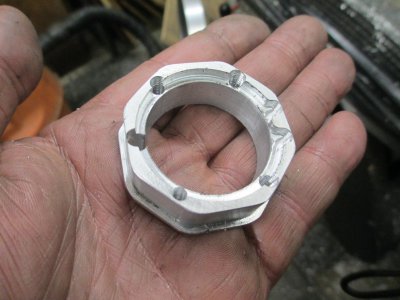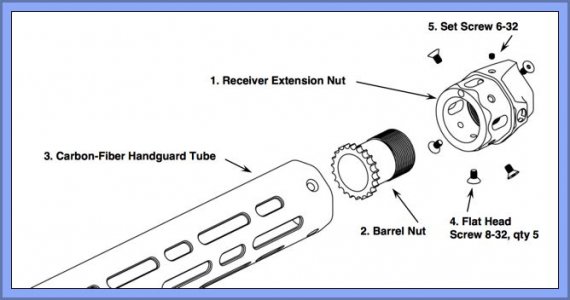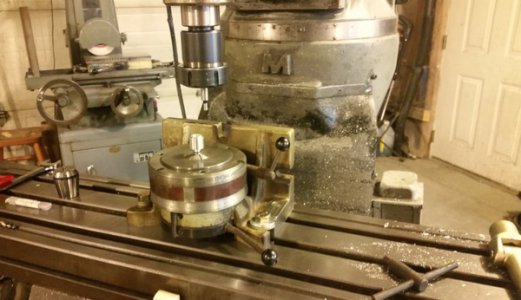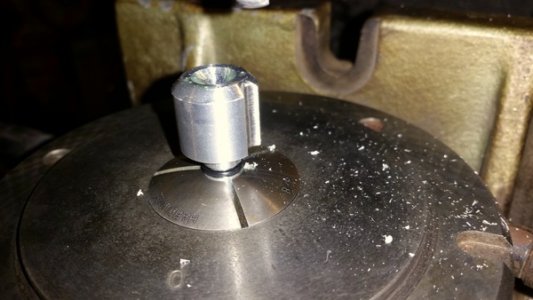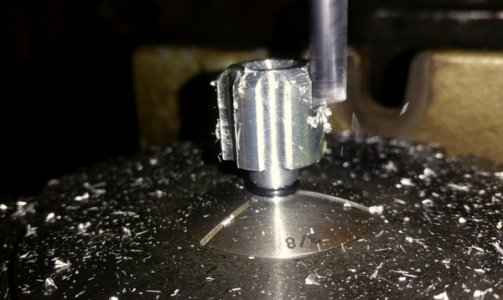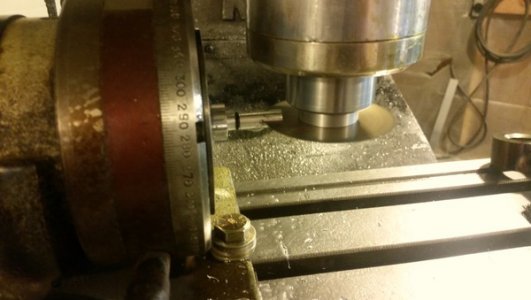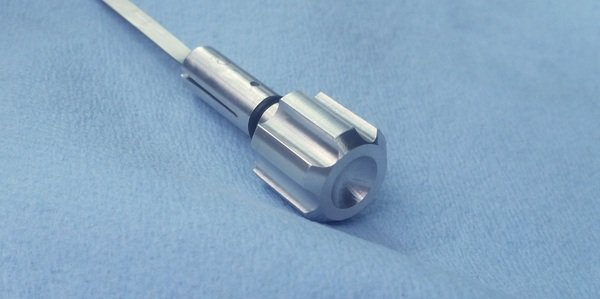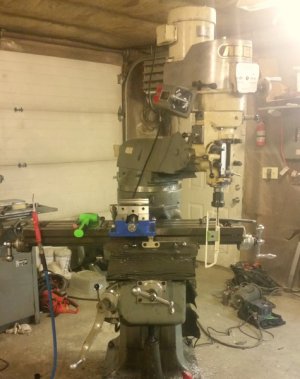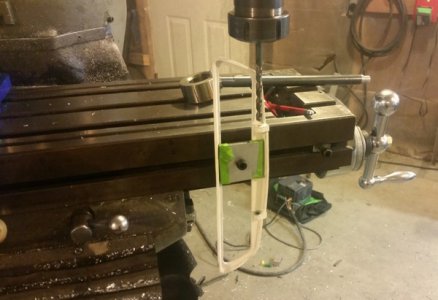I promised I would post this adapter build in POTD so here it is.
The material is 2 inch round 6061-T6 aluminum and needs to be carved into an octagon shape. This should have been about a one hour project on Monday, but due to a very strange controller program issue and other commitments I didn’t get back to it until today. A quick note on the programming issue: I found a bug in my software, this one had never shown up in the 18 months since I did the upgrade on my mill. There was a logic error in my software that only showed up under an almost impossible set of conditions. This part had exactly the right set of conditions for it to fail. The tool path cut most of the part and then just cut straight across to the other side. That’s why we do air cuts on a new part. It took me a day to figure out what the problem was, and about 20 seconds to fix it in one line of code.
Prepping the blank: The part is 0.593 long, so I cut a chunk fo aluminum about 7/8 long. Through drilled it with a ½ inch drill, the counter sunk to about ¾ deep, for inside tool clearance, to accept the flat head cap screw to secure it to the table.
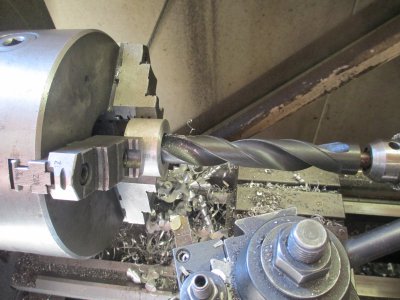
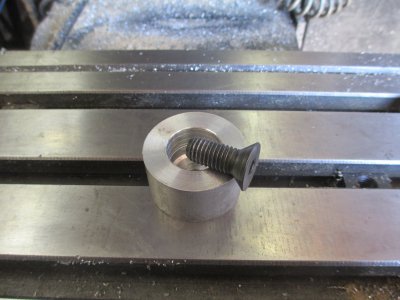
Finding the center
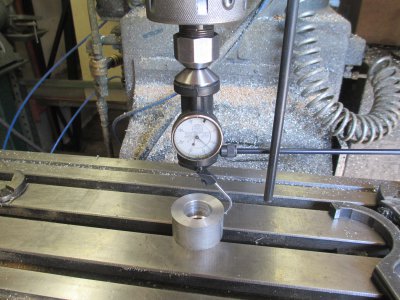
Cutting the outside and inside profile, there are three separate operations here; the outside profile, the base profile, and the inside pocket. This was all done with one tool, I didn’t take picture of all of the operations. Using only the highest quality Harbor Freight 9/16 HSS end mill at 0.500 DOC, 2400 RPM, 10 IPM, about 0.040 step over, with a finish 0.005 step over.
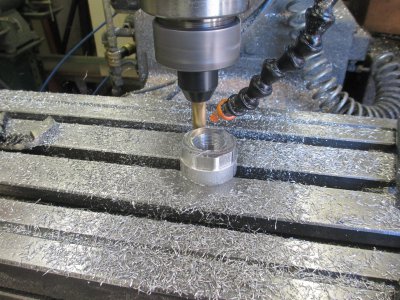
Pocketing and outside profiling finished.
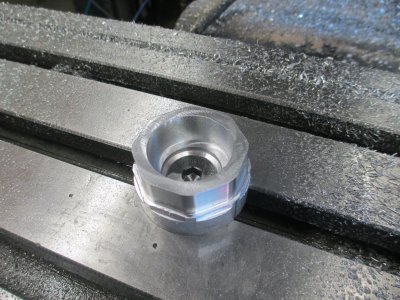
Inside profile, screw clearance and lock tab. 0.125 HSS end mill, 3600 RPM, 6 IPM cutting speed, 0.030 DOC, 0.4 step over, for a total of 0.115 deep.
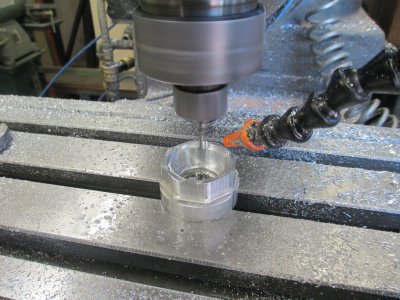
Drilling and tapping 8-32, and one clearance hole. I should have done the drilling and tapping before I did the profiling because of the very thin walls. It worked out OK, I’ll switch the order of operation on the next one. That is what prototypes are for.
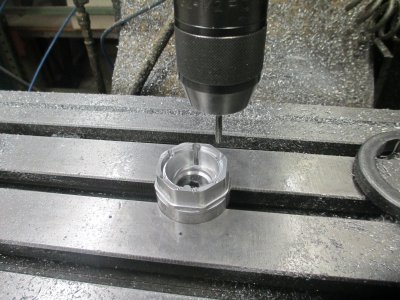
Since this is an octagon, I needed to install the 4-jaw on the lathe. This is a wood dowel I use to control the chuck when removing and replacing. Stick it through the chuck into the spindle, that way the chuck can’t drop and squish my fingers if I lose control of it.
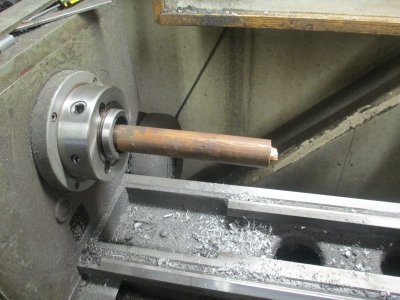
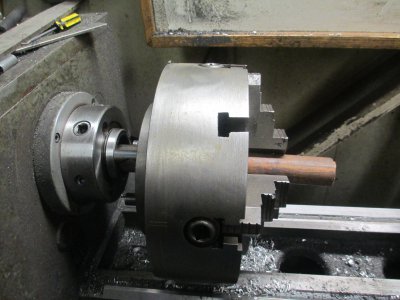
Rough facing off the holding tab, only takes a couple of minutes.
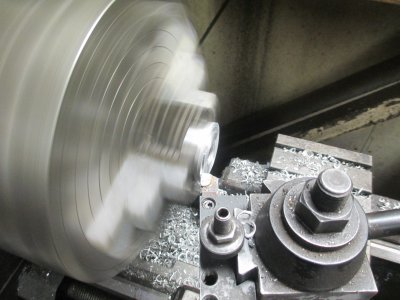
Finishing to length. Measure the part, move over the required amount, and cut.
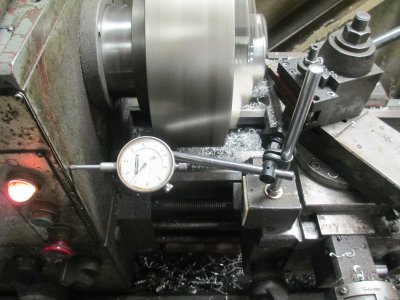
And the finished part before going into the vibratory deburing tub.
